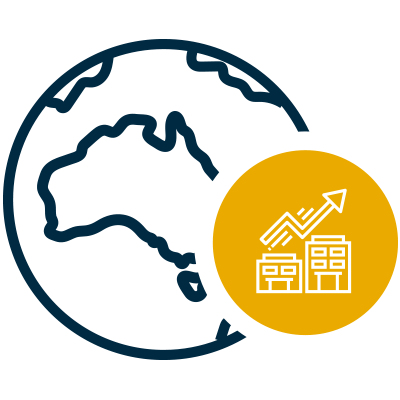SUMMARY
The AREIT market continued its rally in June, posting another strong month up 5.6%. In comparison, the Fund returned 5.7%. The last three months have seen a dramatic rally in the sector as Australian 10-year bond yields came down from highs of 1.9% in late February to 1.5% currently, providing a tailwind for the yield-sensitive real estate sector. For the quarter to June 2021, the Fund has returned 14.9% compared to the benchmark of 10.7%. For the Financial Year ended in June, the Fund returned 31.8% against the benchmark of 33.9%.














